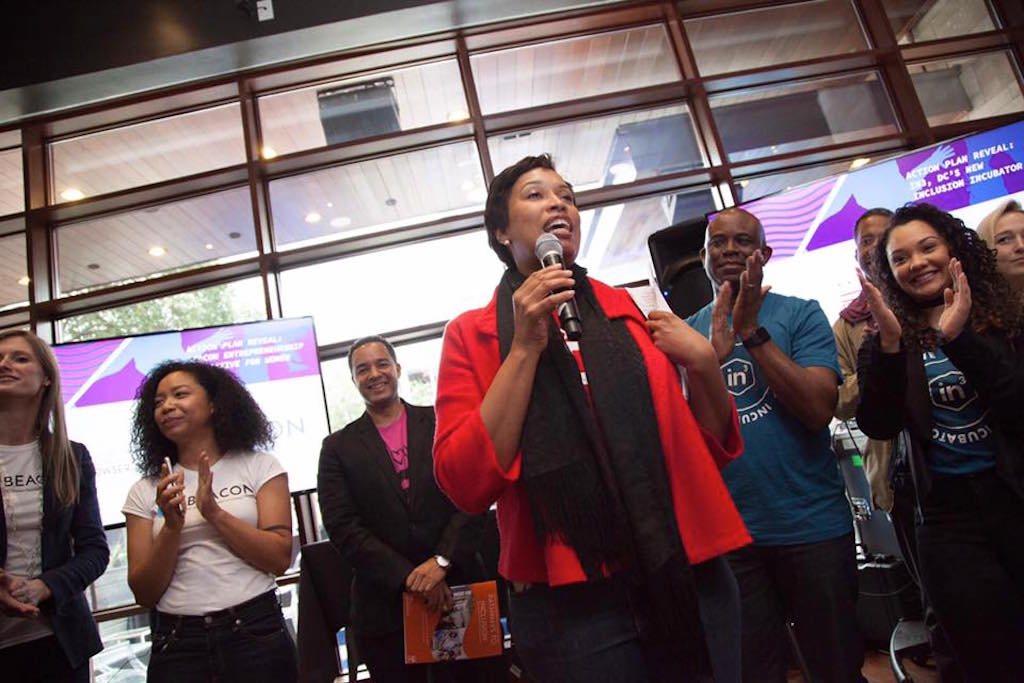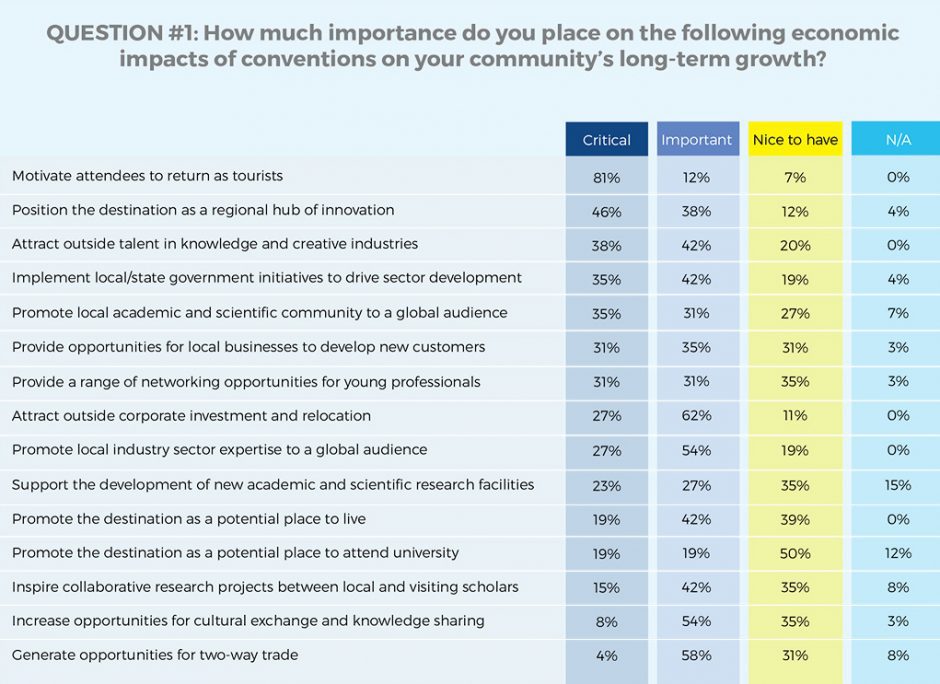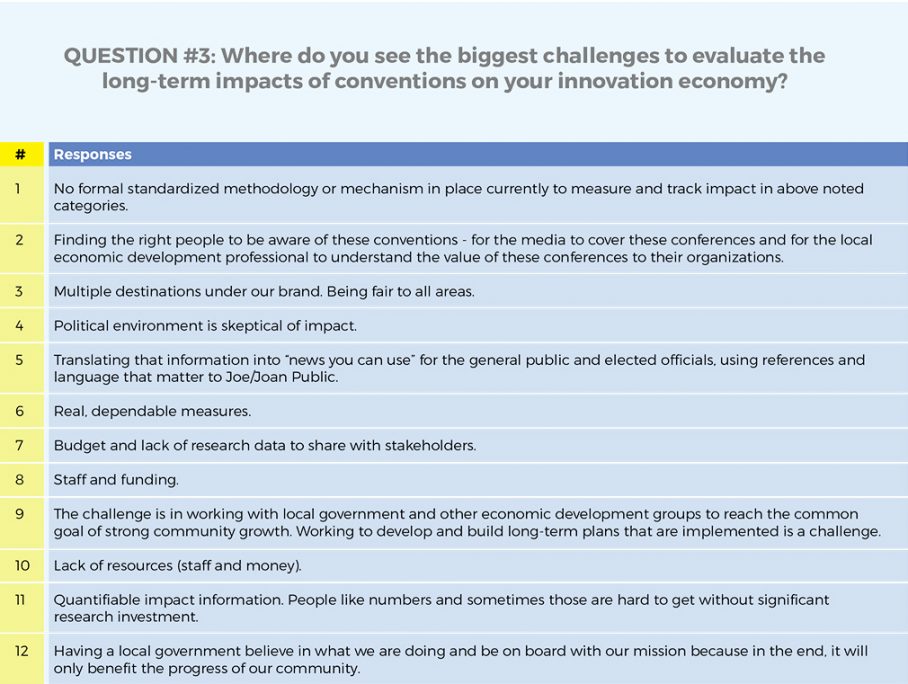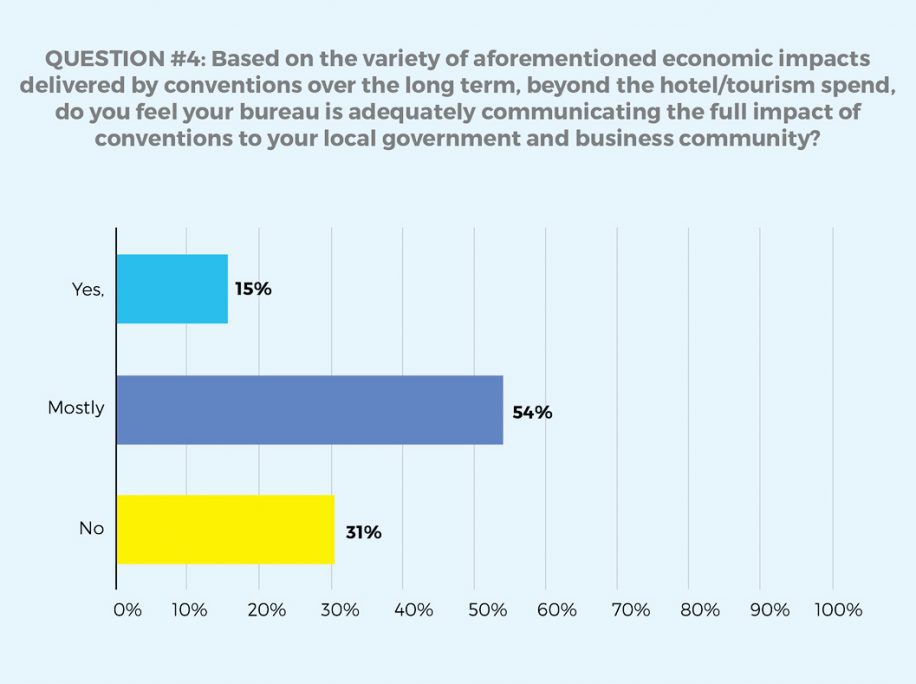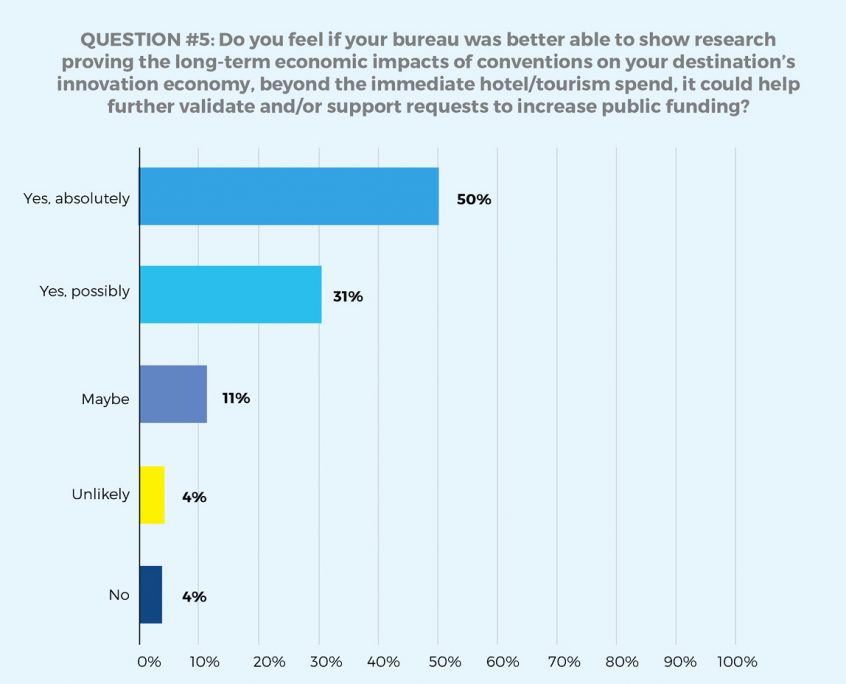Skift Take
City governments and convention bureaus would love to better understand the long-term economic impacts that conventions in advanced industries deliver to their cities, but there are a lot of challenges trying to establish metrics and tracking methodologies to accomplish that.
This sponsored content was created in collaboration with a Skift partner.
Meetings and conventions pump a significant amount of direct spending into their host cities’ economies, which is typically well documented by the local convention and visitors bureau. In Nashville, for example, 42 percent of visitor spend is attributed to convention delegates paying for local hotels, restaurants, transportation, meeting facilities, etc.
However, there’s a greater economic impact derived from conventions over the long term beyond the immediate delegate expenditure — especially those in technology, creative, medical, scientific, and other advanced industries — that’s not evaluated and measured to any large degree.
For example, among the influx of business leaders arriving in town for conventions, some will potentially develop longstanding business relationships with local companies. Others will expand their operations in a city, open new facilities, and/or bring new talent and investment capital into the region that increases the local tax base.
All of those scenarios and others help drive growth across a myriad of sectors, and yet, that growth is neither being tracked nor leveraged to build upon.
Cities across the U.S. are rapidly expanding their innovation economies, where local startups are collaborating with regional academic and research institutions to develop new products and services in priority sectors ranging from life sciences to robotics to digital media services. Supporting that, conventions deliver rotating groups of thought leaders who can supplement the pool of local resources and intelligence specific to those sectors.
Another long-range benefit: Conventions deliver positive marketing exposure that destinations receive when thousands of people descend on a city for a few days. That brand lift can help pivot a city’s reputation regionally, nationally, and internationally, which helps attract outside investment.
City and state government officials, economic development professionals, and convention bureau executives are aware of these legacy economic impacts. But they’re rarely communicated in annual visitor impact reports because they’re difficult to measure.
“There’s always been this intangible about what the leave-behind is in a city from having leaders of industry and that knowledge base come to your city,” said Gregory O’Dell, president and CEO of Events DC, which oversees convention promotion and development in Washington, D.C. “So, while I think it’s been a long time coming to try to measure that effect, we can all speak to examples anecdotally.”
The lack of empirical metrics or detailed case studies showing how conventions are a catalyst for growth and innovation is a significant missed opportunity. As such, both the public and private sectors don’t have a clear idea about how long-term economic development is happening organically, based on transient traffic in high-priority sectors coming and going through the region.
In Skift’s recent research report, “Defining Conventions As Urban Innovation and Economic Accelerators,” produced in collaboration with Meeting Mean Business, numerous government and economic development officials said that the long-term economic impacts of conventions are often not even a topic of internal conversation, yet.
“It’s not something I’m aware of, but it’s certainly interesting to understand the results down the road stemming from our conventions,” said Philadelphia mayor Jim Kenney. “That would be very useful, not just for the hospitality, tourism, and convention business, but all of tech, modern manufacturing, etc.”
Nikia Clarke, executive director of the San Diego Regional Economic Development Corporation, expressed similar sentiments.
“We can say what the economic impact of Comic-Con or BIO is,” she said. “However, in terms of partnering with our research institutions to actually measure the value of our conferences in the long term, that’s not something that we’ve done, either targeted or tactically. It’s funny, because my background is in research, and I’m just thinking about that puzzle. It seems like a very difficult thing to measure in a longitudinal way.”
Erik Caldwell, economic development director for the city of San Diego, added: “If somebody could figure out how to quantify that, that would be huge, because ultimately that’s the goal.”
Identifying Conventions’ Legacy Impacts
Collaborating with U.S. Travel’s Meetings Mean Business advocacy group, Skift surveyed 30 senior executives at convention and visitor bureaus (CVBs) across the country to first try to identify exactly what the legacy benefits of conventions actually are.
Survey participants were first asked to rank the importance of the following long-term economic impacts based on their convention business. While “Motivate attendees to return as tourists” was the highest priority, the following most popular themes highlighted the ability of conventions to spur economic development over the long term.
For the second question, which was open-ended, the survey asked respondents to supply what they thought were the most important long-term economic impacts derived from conventions.
Another open-ended question asked CVB executives what they perceive to be the most significant obstacles impeding the evaluation of their convention lineup’s legacy impacts.
The next question asked bureaus how well they feel they’re fully sharing how conventions benefit the local community.
The last question is especially topical these days with CVBs increasingly worried about budget cuts. If bureaus had a better grasp of the full economic development benefits that conventions deliver to a city, long after the delegates returned home, would that help them shore up their funding?
Four out of five executives surveyed responded that it would, or it possibly might.
There’s a long road ahead for convention bureaus and economic development organizations to determine how conventions are driving growth in their cities. Although, it seems that they’re now at least starting to look at the subject with more emphasis.
Gary Oppedahl, director of economic development for the City of Albuquerque, said there’s a greater awareness today in New Mexico of how economic growth depends on a more intentional and strategic convergence between the city agencies overseeing meetings development and economic development.
“We’re more conscious of how important it is to match up everything happening on the entrepreneurial and business development side with how we position Albuquerque for the acquisition of more conventions,” Oppedahl said. “We see tourism, convention, and economic development as two sides of the same coin.”
This story is based on a report and research created collaboratively by Meetings Mean Business and Skift’s content studio, Skift X.
Have a confidential tip for Skift? Get in touch
Tags: albuquerque, meetings and events, Meetings Mean Business, philadelphia, skift cities, washington dc
Photo credit: Washington, D.C. Mayor Muriel Bowser promoted her economic development goals at SXSW 2017. Destination DC

